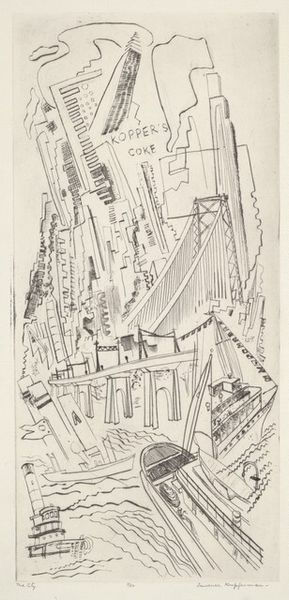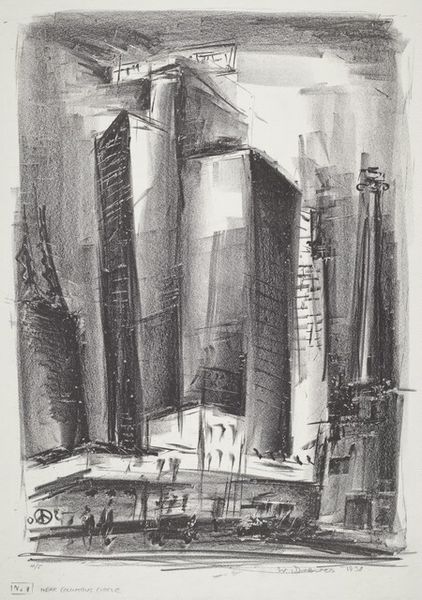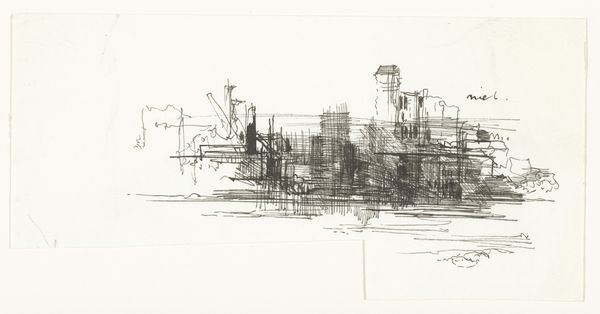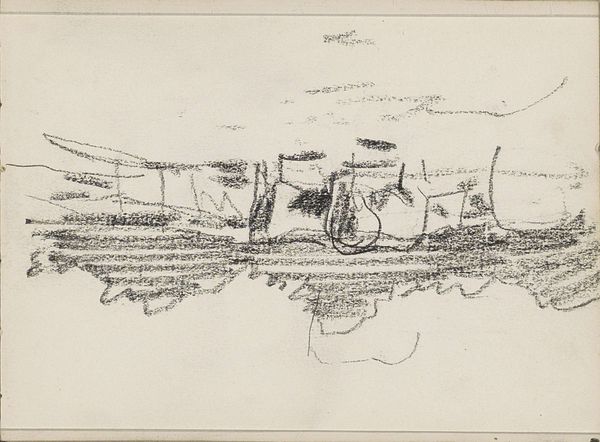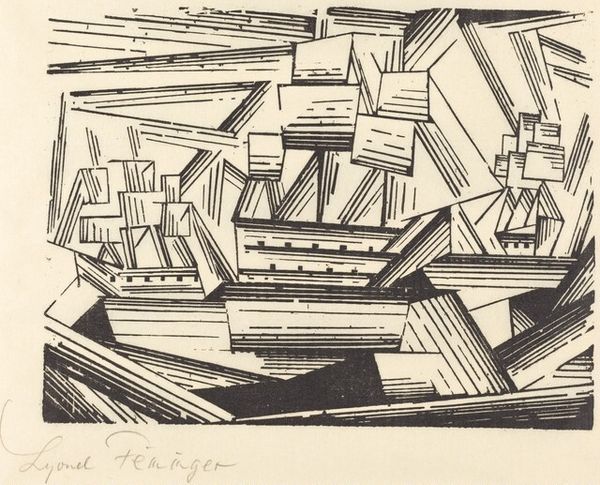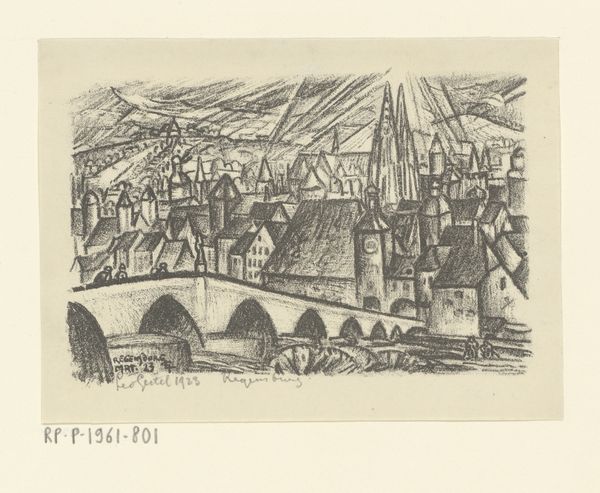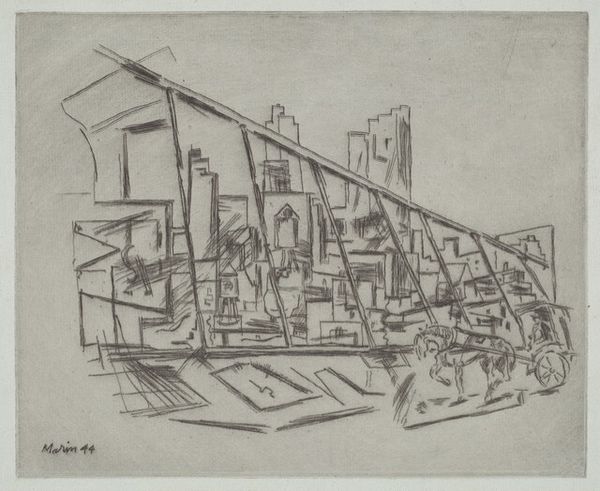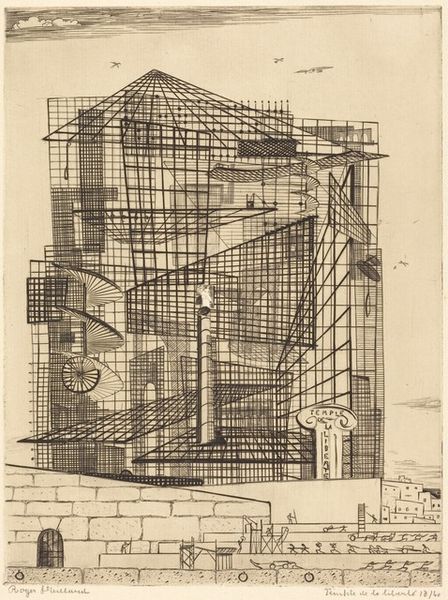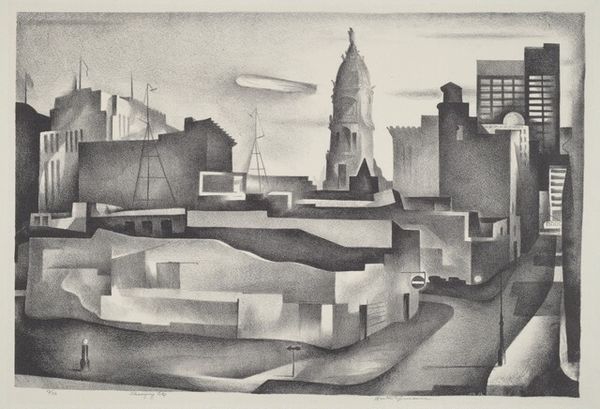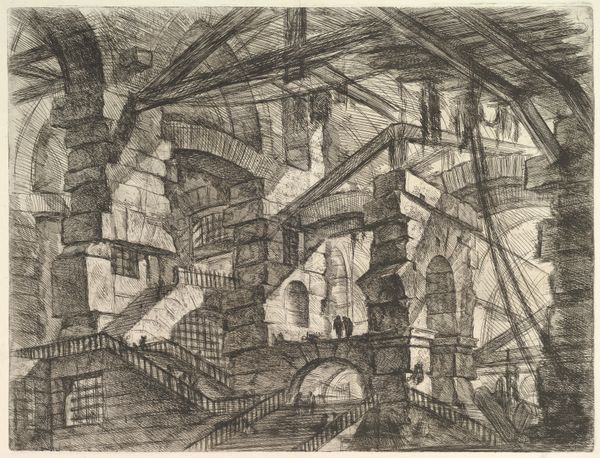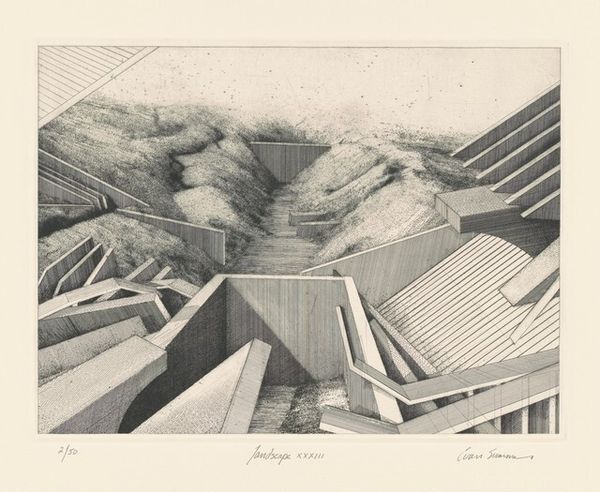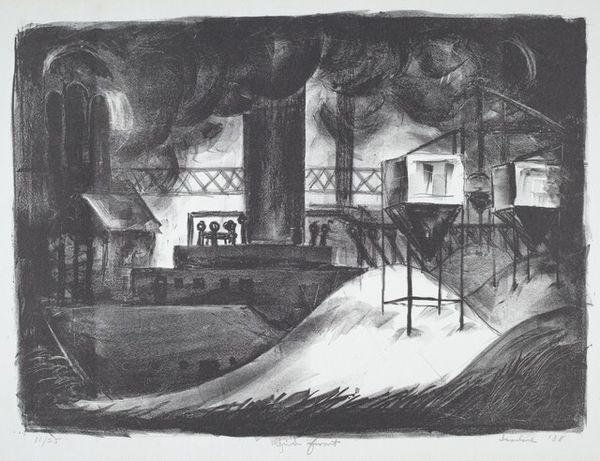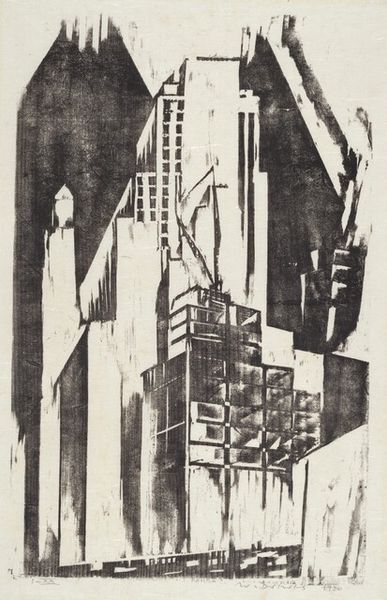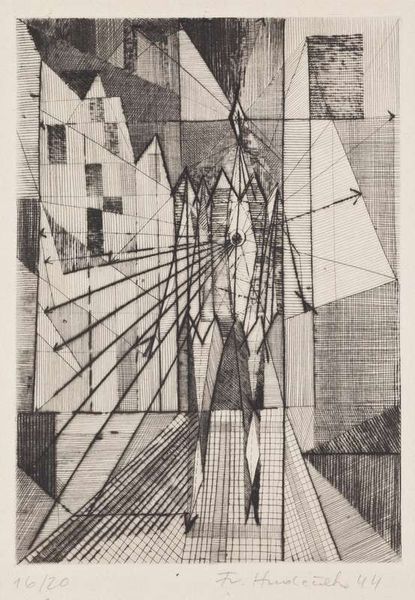
drawing, print, graphite
#
drawing
#
cubism
# print
#
geometric
#
line
#
graphite
#
cityscape
Copyright: National Gallery of Art: CC0 1.0
Curator: This lithograph, titled "La Roue tourne aux Invalides," showcases Germaine Marguerite de Coster's talent for transforming familiar scenes into cubist compositions. Editor: It’s dizzying! The stark lines and fragmented shapes almost vibrate. There’s a restless energy that’s quite compelling. Curator: Indeed. The choice of graphite enhances this effect, doesn't it? It yields subtle tonal variations, constructing depth and shadow while emphasizing the geometric elements. Notice how the Invalides and the Ferris wheel become prisms, dissected and reassembled on the page. Editor: I’m struck by how the line work seems to abstract the monumental character of the Parisian skyline. The dome is reduced, and the Ferris wheel appears almost skeletal. Do you think that suggests a particular viewpoint or a specific historical moment for Paris? Curator: Well, it's likely an effort to present modernity and change. The Ferris wheel was a very fashionable feature of Paris for a period. And Paris has constantly reconstructed itself through world fairs and technological achievements like new monuments and new ways of transportation. It is also intriguing how she seems to give as much weight to the background and the foreground which emphasizes the picture plane as well. Editor: The social role of these images… I’m wondering how it was received? This would certainly challenge conventional views of the cityscape. It looks incomplete somehow. Curator: Exactly! De Coster isn't offering a postcard view. Rather, it demands engagement and interpretation from the viewer. That invites new ways to look at what is there but also think about where they might be going as well. Editor: Looking at it now, the monochromatic palette also emphasizes the deconstruction of form. This is an artwork of perspective and technique, a sign of where we go next in our perception of art. Curator: I concur. What once was a faithful depiction transforms into dynamic planes of experience. Editor: Well, this has provided me a new way to look at the lithograph's geometric tension and contextual meaning within De Coster's career. Curator: And for me, to reexamine how a historical location shapes her creative perspective. Thank you!
Comments
No comments
Be the first to comment and join the conversation on the ultimate creative platform.
